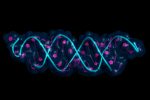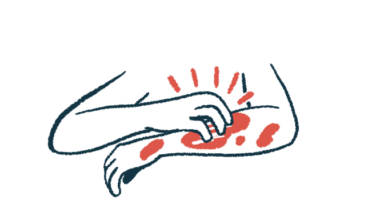EB-101 Healed Wounds, Eased Pain Up to Six Years in Trial

ibreakstock/Shutterstock
Treatment with Abeona Therapeutics‘ investigational cell therapy EB-101 led to successful wound healing and eased pain in seven adults with recessive dystrophic epidermolysis bullosa (RDEB) who were followed for up to six years in a clinical trial.
“The updated Phase 1/2a results showed safety and durable efficacy follow up, with EB-101 treated wounds continuing to show a considerable reduction in both wound burden and associated long-term pain for up to six years,” Vishwas Seshadri, PhD, head of research and clinical development at Abeona, said in a press release.
The updated data were presented at the annual meeting of the Society for Pediatric Dermatology (SPD), in a poster titled “Long-Term Healing, Pain Reduction, and Patient-Reported Outcomes in Recessive Dystrophic Epidermolysis Bullosa Following EB-101 Treatment of Large, Chronic Wounds.”
This Phase 1/2a clinical trial (NCT01263379) is testing the long-term efficacy and safety of EB-101 for treating chronic wounds in seven adults, ages 18 to 45, who have RDEB. Previously reported results from the trial suggested that the therapy improved wound healing and was generally well-tolerated.
At the SPD meeting, findings were reported for 26 treated wounds followed
for three years, 15 followed for four years, 15 followed for five years, and five followed for six years.
Data show that 50% or greater wound healing (compared to the start of the trial) was present in 69% of treated wounds at three years, 93% at four years, 80% at five years, and 80% at six years.
None of the treated wounds were determined to be painful, based on investigator assessment. By contrast, more than half of the treated wounds were assessed as painful prior to treatment with EB-101.
Participants were asked to rate how their pain has changed (from years three to six) on a seven-point scale, with one representing “very much improved” and seven representing “very much worse.” Among the wounds with 50% or greater healing, 76% were reported to have improved, in terms of pain, and 53% had “much or very much improved,” according to Abeona.
“It is important that potential new treatments can durably address large, chronic wounds, which are the most severe wounds that cause substantial pain in patients with RDEB,” Seshadri said.
RDEB is caused by mutations in the gene COL7A1, which provides instructions for making a protein that is important in maintaining the skin’s structural integrity. Treatment with EB-101, a gene-corrected cell therapy, involves taking a patient’s skin cells and, under laboratory culture conditions, giving those cells a non-mutated version of COL7A1 (using a viral vector). Then, the cells are transplanted back to the patient.
Abeona is currently running a pivotal Phase 3 clinical trial (NCT04227106), named VIITAL, to test EB-101 in 10 to 15 RDEB patients, ages 6 and older. This study is actively recruiting participants at Stanford University in California.
“We are excited about the [Phase 1/2a] data and look forward to further investigating EB-101’s potential to provide durable benefit in our ongoing pivotal Phase 3 VIITAL study,” Seshadri said.







